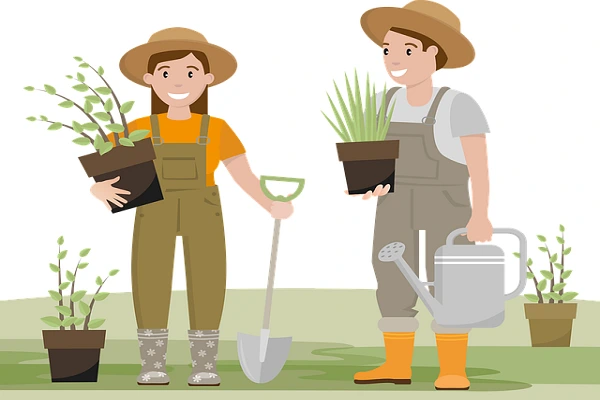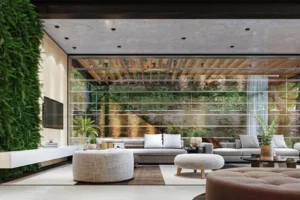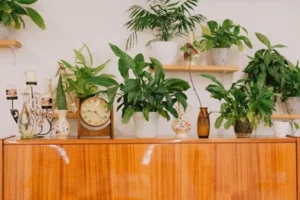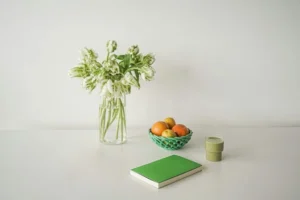Living in an apartment often means sacrificing outdoor space, making gardening feel like a distant dream. With limited room for pots and planters, traditional gardening can be a challenge. Sunlight availability, watering schedules, and even neighbors’ rules about balcony setups can further complicate things.
That’s where innovative solutions like vertical hydroponic systems come in. These soil-free setups allow plants to thrive in stacked or hanging arrangements, using nutrient-rich water instead of dirt. On the other hand, traditional gardening—whether in pots, window boxes, or small raised beds—offers a more familiar, hands-on approach that many plant lovers enjoy.
Both methods have their pros and cons, especially when it comes to space, upkeep, and productivity. So, which one is better suited for apartment living? Let’s explore how these two approaches compare and help you decide which fits your lifestyle best.
Understanding Vertical Hydroponic Systems
If you’re looking for a way to grow fresh produce without the mess of soil or the hassle of outdoor space, vertical hydroponic systems might be the perfect solution. These setups use a water-based nutrient solution to nourish plants, allowing them to grow in stacked layers or wall-mounted structures. Since they don’t rely on soil, they take up far less space than traditional gardening, making them ideal for apartments with limited room.
One of the biggest advantages of hydroponic gardening is its efficiency. These systems use significantly less water than soil-based planting since the liquid is continuously recycled. They also allow for quicker plant growth and higher yields, ensuring you have access to fresh herbs, vegetables, and greens throughout all times of the year—without waiting for the right weather cycle. Plus, because they’re grown indoors, you don’t have to worry about changing temperatures or unexpected cold snaps affecting your crops.
However, hydroponics does come with some trade-offs. Setting up a system requires an initial investment, which can be pricier than simply buying pots and soil. Additionally, most setups rely on electricity to circulate water and nutrients, meaning they aren’t completely hands-off. Regular maintenance—such as monitoring water pH levels and ensuring the system stays clean—is also essential to keeping your plants thriving.
Despite these challenges, many urban gardeners find that the benefits outweigh the downsides. Whether you want a compact way to grow food or a method that lets you harvest fresh produce no matter the time of year, vertical hydroponic gardening offers an innovative, space-saving alternative to traditional planting.
Traditional Gardening in Apartments
For those who love the feel of soil between their fingers, traditional gardening offers a simple and rewarding way to grow plants in an apartment setting. Whether you’re using potted plants, window boxes, or a small balcony garden, this method relies on natural soil and sunlight to keep your greenery thriving. It’s a familiar, budget-friendly approach that doesn’t require high-tech equipment or electricity—just a little patience and care.
One of the biggest perks of traditional gardening is its affordability. With just a few pots, some quality soil, and seeds or seedlings, you can start growing everything from fragrant herbs to fresh vegetables. There’s also something incredibly satisfying about watching plants grow naturally over different parts of the year, responding to changes in temperature and daylight. And for those who appreciate aesthetics, nothing beats the charm of lush, leafy greens or blooming flowers brightening up a windowsill or balcony.
That said, traditional gardening in an apartment does come with its challenges. Space is often the biggest limitation—there’s only so much room for pots, and not every apartment has a balcony or access to sufficient sunlight. Soil maintenance can also be a bit of a hassle, requiring regular watering, fertilizing, and repotting as plants grow. Additionally, pests like gnats or aphids can occasionally make an unwelcome appearance, especially if plants are overcrowded or overwatered.
Despite these hurdles, many apartment dwellers find traditional gardening to be a relaxing and fulfilling hobby. With the right setup, you can enjoy homegrown produce and vibrant greenery, whether it’s for a single growing cycle or throughout the entire year.
Comparing the Two Methods
Both vertical hydroponic systems and traditional gardening have their own advantages and drawbacks, especially when it comes to apartment living. The best choice depends on your space, budget, and how much effort you’re willing to put into plant care. Let’s break down how these two methods compare in key areas.
Space Efficiency
If you’re working with limited square footage, vertical hydroponics has a clear advantage. These systems maximize space by stacking plants, allowing you to grow more without cluttering your apartment. Traditional gardening, on the other hand, relies on pots and planters, which can quickly take over a windowsill or balcony. If space is tight, hydroponics offers a more compact solution.
Water Usage
Hydroponic systems are designed to recycle water, making them far more efficient than soil-based gardening. Instead of letting excess moisture drain away, these setups continuously circulate nutrients, reducing overall consumption. In contrast, traditional gardening requires regular watering, and soil tends to lose moisture more quickly, especially in warmer months. If water conservation is a priority, hydroponics wins in this category.
Maintenance
Each method comes with its own upkeep. With hydroponics, you’ll need to monitor the nutrient solution, adjust pH levels, and ensure the system is running properly. While this might sound technical, once you get the hang of it, it’s relatively straightforward. Traditional gardening, meanwhile, involves routine tasks like watering, pruning, and dealing with weeds or pests. Some people enjoy the hands-on aspect of soil gardening, while others prefer the automated nature of hydroponics.
Yield and Growth Speed
If you want fresh produce regardless of the season, hydroponics is the way to go. Plants in these systems grow faster since they receive a constant supply of nutrients and aren’t affected by weather changes. Traditional gardening, however, is more dependent on natural cycles—certain crops may only thrive during specific parts of the year, limiting what you can grow at any given time.
Cost Considerations
When it comes to budget, traditional gardening is the more affordable option upfront. A few pots, soil, and seeds don’t cost much, making it easy to get started. Hydroponics, however, requires an initial investment in equipment, and ongoing expenses like electricity and nutrient solutions can add up. Over time, the higher yield and efficient water use may balance out the cost, but it’s something to consider before diving in.
Best Choice for Apartment Dwellers
When deciding between vertical hydroponics and traditional gardening for your small apartment, there’s no one-size-fits-all answer. The best option hinges on your budget, the space you have available, and the amount of time and effort you’re willing to dedicate to nurturing your green companions. Each method boasts unique strengths, and interestingly, combining them might just cultivate the perfect urban oasis.
Which One Fits Your Lifestyle?
If your apartment living means limited square footage is a premium, vertical hydroponics emerges as a champion of space efficiency. Imagine a tower system tucked neatly in a corner, capable of supporting dozens of leafy greens or herbs, a feat nearly impossible with traditional pots consuming precious floor or balcony space. This method shines for those craving a consistent supply of fresh produce, regardless of the season’s whims. Shielded from unpredictable weather, your hydroponically grown lettuce, spinach, or strawberries can thrive year-round under controlled conditions. Furthermore, for individuals keen on minimizing soil-related messes and potential pests that can accompany traditional gardening, hydroponics offers a cleaner alternative.
Conversely, if you lean towards a more budget-conscious and hands-on approach, and find joy in the tactile experience of working with soil, then traditional methods might resonate more deeply. A collection of vibrant potted herbs on a windowsill, a small balcony garden bursting with colorful flowers, or even compact window boxes overflowing with cherry tomatoes can bring nature indoors without the need for pumps or specialized nutrient solutions. This approach is particularly appealing if you have a small balcony or access to a shared outdoor space, allowing you to cultivate plants that benefit from natural sunlight and airflow. Plus, the simplicity of traditional gardening, requiring no electricity, can be a significant advantage for those seeking a low-tech, straightforward way to connect with nature.
Why Not Both?
For many apartment dwellers, the most rewarding approach lies in embracing a hybrid strategy, cleverly blending the benefits of both vertical hydroponics and traditional gardening. Picture this: a sleek, wall-mounted NFT (Nutrient Film Technique) system diligently producing a continuous harvest of fresh basil, mint, and chives for your culinary adventures. Alongside it, vibrant potted peace lilies and snake plants purify the air, adding a touch of natural elegance to your living space.
Consider another scenario: a compact vertical tower system dedicated to growing strawberries and leafy greens in your brightly lit kitchen corner, ensuring fresh additions to your breakfast smoothies and salads. Meanwhile, on your small balcony, sturdy tomato and pepper plants thrive in traditional containers, basking in the sun during warmer months.
This symbiotic relationship allows you to maximize your limited space by dedicating vertical setups to fast-growing, high-yield edibles while enjoying the aesthetic appeal and different growing requirements of ornamentals or larger fruiting vegetables in pots. It also provides a buffer against potential system failures in either method. If one system encounters a temporary setback, the other can continue to provide you with fresh greenery or produce. Ultimately, a combined approach offers a versatile and resilient way to cultivate a thriving indoor garden, tailored precisely to your available space, budget, and gardening aspirations.
Final Thoughts
When it comes to apartment gardening, both vertical hydroponic systems and traditional methods have their place. Hydroponics offers an efficient, space-saving solution with faster growth and continuous harvests, no matter the season, while traditional gardening provides an affordable, hands-on experience with the natural charm of soil-grown plants.
The best choice depends on your lifestyle. If you prefer a low-maintenance system that provides fresh produce regardless of the weather, hydroponics might be the way to go. If you enjoy the process of tending to plants and don’t mind adjusting to different growing cycles, traditional gardening could be a more rewarding fit. And, of course, there’s always the option to combine both—using a hydroponic setup for leafy greens while keeping decorative flowers or larger plants in pots.
Whichever route you choose, gardening in an apartment is not only possible but also a great step toward a more sustainable and self-sufficient lifestyle. Whether you’re growing herbs in a window box or harvesting lettuce from a hydroponic tower, the key is to find a method that works for you and makes fresh, homegrown plants accessible all throughout the year.




